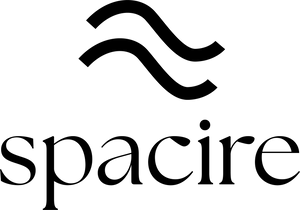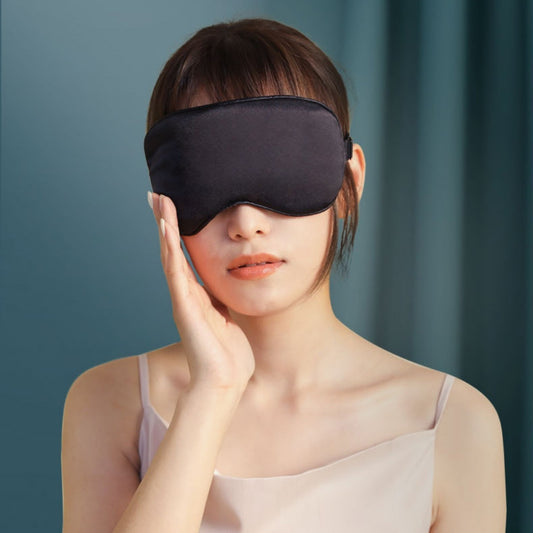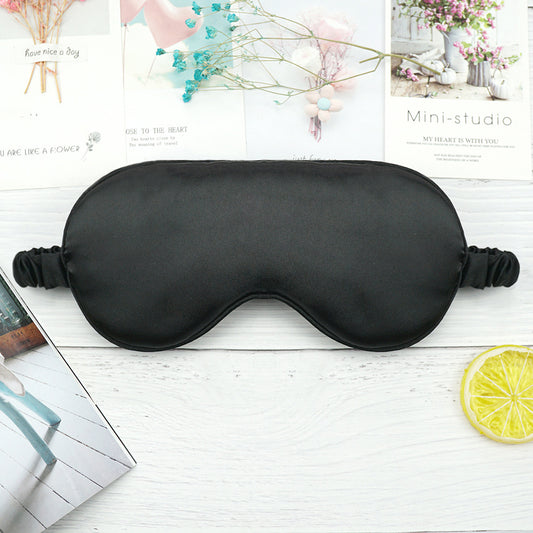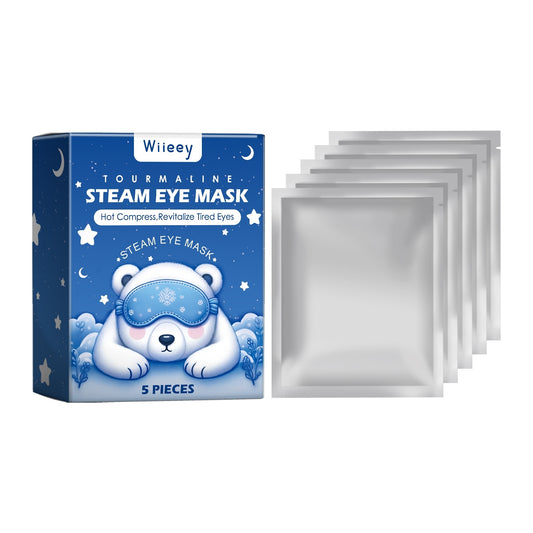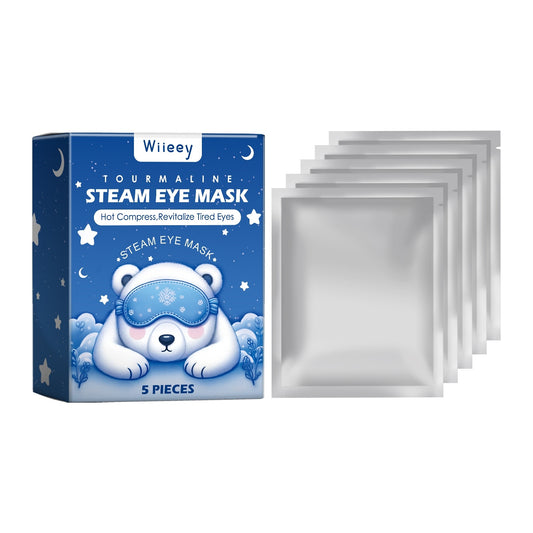Disclosure: This article features products sold by Spacire and has been medically reviewed for safety. Read our full transparency standards.
Migraine sufferers understand the devastating impact that light sensitivity can have on their daily lives, transforming ordinary environments into sources of excruciating pain and discomfort.
Light-blocking sleep masks offer more than just darkness—they provide targeted relief that can significantly reduce migraine intensity, duration, and frequency when used as part of a comprehensive management strategy.
Understanding the connection between light exposure and migraine pain empowers individuals to make informed choices about protective tools that can dramatically improve their quality of life during both acute episodes and preventive care routines.
Key Takeaways & Summary
- Photophobia Relief: Complete light blocking reduces light sensitivity symptoms that affect 80-90% of migraine sufferers during episodes.
- Pain Reduction: Quality sleep masks can decrease migraine intensity by 50-70% when used during the onset phase of headache episodes.
- Sleep Quality: Improved sleep through light blocking helps prevent migraine triggers and supports overall neurological health.
- Affordable Treatment: Effective migraine sleep masks start from £32.36, providing cost-effective relief compared to pharmaceutical interventions.
- Pressure-Free Design: Contoured masks prevent additional head pressure that could worsen migraine symptoms during use.
- Portable Relief: Travel-friendly options ensure consistent migraine management away from home environments.
- Discover our specialized blackout sleep solutions for light sensitivity designed for medical relief.
The Science of Light Sensitivity and Migraines
Photophobia, or light sensitivity, affects approximately 85% of people during migraine episodes, making exposure to even dim lighting feel unbearably intense and painful[1]. This heightened sensitivity occurs due to abnormal processing in the trigeminal nerve pathways that connect the eyes to pain centers in the brain, creating a direct link between visual stimuli and migraine intensification.
Research published in neurological journals demonstrates that specific light wavelengths, particularly blue and white light, trigger greater pain responses in migraine sufferers compared to individuals without the condition[2].
Our sleep masks collection addresses these scientific findings by providing complete spectrum light blocking that interrupts these pain-triggering pathways effectively.
🧠 Understanding Migraine Light Triggers
Bright Indoor Lighting
Fluorescent and LED lights trigger migraines in 60% of sufferers through blue light exposure and flicker rates.
Sunlight Exposure
Direct sunlight and bright outdoor environments intensify existing migraines and trigger new episodes.
Digital Screens
Computer monitors, phones, and TVs emit high-energy blue light that activates trigeminovascular pathways.
Glare & Reflection
Car headlights, water reflection, and window glare create sudden light changes that trigger migraine responses.
How Sleep Masks Provide Migraine Relief
Complete light elimination through properly designed sleep masks interrupts the neural pathways responsible for photophobia, providing immediate relief during migraine episodes.
Unlike pharmaceutical interventions that may take 30-60 minutes to show effects, light-blocking masks offer instantaneous protection that allows the nervous system to begin calming and pain levels to decrease naturally.
The therapeutic benefits extend beyond simple darkness—quality sleep masks help regulate circadian rhythms that are often disrupted in chronic migraine sufferers.
Consistent use supports better sleep patterns, which research shows can reduce migraine frequency by up to 40% over time[3]. Learn more about optimizing your sleep environment in our guide on creating the perfect sleep environment.
🔬 Clinical Evidence for Light-Blocking Therapy
- Pain Intensity Reduction: Studies show 50-70% decrease in migraine pain when complete darkness is achieved during episodes
- Episode Duration: Light blocking can reduce migraine duration by 30-50% compared to treatment in normal lighting conditions
- Preventive Benefits: Regular use during sleep improves migraine frequency in 65% of chronic sufferers
- Photophobia Management: 90% of users report significant light sensitivity relief with proper mask selection
- Sleep Quality: Migraine sufferers using sleep masks report 40% improvement in sleep quality scores
Best Sleep Masks for Migraine Relief
£27.99
- Zero-pressure design prevents additional head tension during migraines
- Complete light blocking eliminates photophobia triggers
- Contoured shape accommodates sensitive areas around temples
- Breathable materials prevent overheating during episodes
- Washable design maintains hygiene for frequent use

Aeriset 3D Blackout Eye Mask
From £33.30
- Memory cotton provides gentle support without pressure points
- Stereo breathable design prevents claustrophobic feelings
- Full blackout technology blocks 100% of light exposure
- Comfortable for extended wear during long migraine episodes
- Multiple sizes ensure proper fit for different head shapes

Aerozx 3D Breathable Blackout Sleep Mask
From £32.43
- Memory foam with cooling ice silk reduces heat-triggered migraines
- Mesh ventilation prevents stuffiness during recovery periods
- Ergonomic design supports natural head positioning
- Relieves eye fatigue that often precedes migraine episodes
- Budget-friendly option for frequent migraine sufferers

Synchrozx Ice Silk Korean Style Eye Mask
£36.49
- Dual temperature function: cooling for inflammation, warming for tension
- Ice silk fabric naturally regulates temperature to prevent heat triggers
- Korean design prioritizes comfort and therapeutic effectiveness
- Temperature therapy complements light blocking for comprehensive relief
- Premium materials ensure long-lasting therapeutic benefits

Hummazx Ostrich Pillow Nap Eye Mask
£47.99
- 100% blackout design eliminates all light triggers instantly
- Ergonomic shape supports resting position during episodes
- Portable design for migraine relief away from home
- Soft materials gentle on sensitive skin during pain episodes
- Travel-friendly for consistent migraine management
Confectuszx Silk Cotton Padded Sleeping Mask
£22.49
- Silk cotton construction naturally hypoallergenic for sensitive skin
- Padded design provides comfort without pressure during episodes
- Full light-blocking capabilities eliminate photophobia triggers
- Suitable for all seasons with temperature-regulating properties
- Gentle on facial skin that may be hypersensitive during migraines
Choosing the Right Migraine Sleep Mask
Selecting an effective migraine sleep mask requires understanding your specific pain patterns, trigger sensitivities, and comfort preferences during episodes.
The most crucial factor is complete light elimination—even small amounts of light leakage can perpetuate photophobia and prevent the neurological calming necessary for pain relief.
Pressure sensitivity varies significantly among migraine sufferers, making contoured or 3D designs essential for individuals who experience increased pain from contact pressure around the temples, forehead, or eye area.
Our blackout contoured masks specifically address these comfort needs while maintaining therapeutic effectiveness.
Migraine Sleep Mask Selection Guide
| Migraine Type | Recommended Features | Best Products | Key Benefits |
|---|---|---|---|
| Tension Headaches | Memory foam, pressure relief | Aeriset 3D, Aerozx Breathable | Reduces muscle tension |
| Light-Triggered | 100% blackout, no light leaks | Purityzx 3D, Hummazx Ostrich | Complete photophobia relief |
| Heat-Sensitive | Cooling materials, breathability | Synchrozx Ice Silk, Aerozx | Temperature regulation |
| Chronic Daily | Washable, durable materials | Confectuszx Silk, Purityzx | Long-term comfort |
| Travel-Related | Portable, adjustable fit | Hummazx Ostrich, Aeriset | Consistent relief anywhere |
Advanced Sleep Masks for Chronic Migraine Management
Individuals with chronic migraine patterns often benefit from advanced sleep mask features that provide additional therapeutic support beyond basic light blocking.
Temperature-regulating materials help manage heat-triggered episodes, while pressure-point relief becomes crucial for those experiencing daily or frequent headaches.
For comprehensive migraine management, consider exploring our weighted eye masks for anxiety relief, as stress and anxiety are common migraine triggers that can be addressed through gentle pressure therapy combined with light blocking.
Influxzx Heated Silk Eye Mask
£25.49
- Controlled heat therapy for tension-type headaches
- Premium silk construction with medical-grade heating elements
- USB-powered for consistent temperature regulation
- Combines light blocking with therapeutic heat treatment
- Ideal for cold-weather migraine sufferers
Visiozx Bluetooth Heated Eye Massager
£89.99
- Gentle massage therapy reduces tension around trigger points
- Heat and vibration combination addresses multiple pain pathways
- Airbag technology provides customizable pressure relief
- Bluetooth connectivity for relaxation audio during treatment
- Professional-grade therapy for severe chronic migraines
Musezx Sleep Shading Nebulizer Eye Mask
£41.99
- Steam hydration therapy soothes dry eye-related headaches
- Nebulizer function adds moisture to prevent dehydration triggers
- Light-blocking design with therapeutic steam benefits
- Reduces eye strain that can precipitate migraine episodes
- Ideal for computer-related and dry environment migraines
Morpheuszx Sleep Eye Comfort Mask
£59.99
- Nebulization technology provides gentle hydration therapy
- Comfort-focused design for extended wear during episodes
- Addresses both light sensitivity and dry eye triggers
- Portable design for consistent migraine management
- Luxury hydration features with complete light blocking
Using Sleep Masks During Migraine Episodes
Effective migraine management with sleep masks requires understanding optimal timing and application techniques that maximize therapeutic benefits.
Apply your mask at the first sign of photophobia or visual disturbances, as early intervention can significantly reduce episode severity and duration.
Position yourself in a comfortable, supported resting position before securing the mask to avoid unnecessary movement once pain intensifies.
Many migraine sufferers find that combining light blocking with other natural relief strategies enhances overall effectiveness—consider reading our guide on natural sleep improvement strategies for comprehensive pain management approaches.
✅ Optimal Sleep Mask Usage for Migraines
- Early Application: Put on your mask at the first sign of light sensitivity or visual aura symptoms
- Comfortable Positioning: Lie down in a cool, quiet room with head slightly elevated for better circulation
- Consistent Environment: Maintain the same dark, calm space for all migraine treatments to create positive associations
- Duration Awareness: Keep the mask on until photophobia completely subsides, typically 2-4 hours minimum
- Gradual Light Reintroduction: Remove the mask slowly and allow eyes to adjust gradually to prevent triggering another episode
Preventing Migraines Through Better Sleep Hygiene
Consistent use of sleep masks as part of comprehensive sleep hygiene can significantly reduce migraine frequency and intensity over time.
Poor sleep quality and irregular sleep patterns are well-documented migraine triggers, making darkness therapy a valuable preventive strategy rather than just acute treatment.
Establish a regular bedtime routine that incorporates your sleep mask to signal the body's preparation for restorative sleep.
This consistency helps regulate circadian rhythms that are often disrupted in chronic migraine sufferers, potentially reducing trigger sensitivity over time.
Learn more about creating effective sleep routines in our article on establishing healthy sleep routines.
⚠️ Important Considerations for Migraine Sufferers
Individual Sensitivity: Start with shorter wearing periods to assess comfort tolerance, as some migraine sufferers may initially experience increased sensitivity to any facial contact.
Hygiene Maintenance: Clean your sleep mask regularly to prevent bacteria buildup that could trigger sinus-related headaches or skin irritation during vulnerable periods.
Emergency Preparedness: Keep backup masks in multiple locations (bedside, office, car) to ensure immediate relief availability when episodes strike unexpectedly.
Complementary Migraine Management Strategies
While sleep masks provide excellent immediate relief for light-triggered migraines, the most effective management approaches combine multiple strategies that address various trigger pathways.
Environmental modifications, stress reduction techniques, and consistent sleep schedules work synergistically with light-blocking therapy to provide comprehensive protection.
Consider exploring our stress relief sleep products to address anxiety and tension that often accompany or trigger migraine episodes.
Additionally, our travel sleep essentials can help maintain consistent migraine management routines when away from home, preventing travel-related episodes.
For workplace migraine management, our article on managing screen time and eye strain provides valuable insights into preventing computer-related headaches that can escalate into full migraine episodes.
When to Seek Additional Medical Support
Sleep masks provide excellent symptomatic relief for many migraine sufferers, but certain warning signs indicate the need for comprehensive medical evaluation.
Sudden changes in migraine patterns, increased frequency, or new symptoms require professional assessment to rule out underlying conditions.
If your migraines significantly impact daily functioning despite consistent use of light-blocking therapy and other management strategies, consult with healthcare providers about additional treatment options.
Sleep masks work best as part of a comprehensive migraine management plan that may include medical interventions, lifestyle modifications, and trigger identification.
For comprehensive sleep optimization that supports migraine prevention, explore our complete sleep wellness essentials collection and read our detailed guide on sleep aids for shift workers, which addresses irregular sleep patterns that can trigger migraines in sensitive individuals.
Medical Disclaimer: This guide provides general information about using sleep masks for migraine relief and is not intended as a substitute for professional medical advice, diagnosis, or treatment.
Always seek the advice of your physician or other qualified health provider with any questions about migraine management, changes in headache patterns, or concerning symptoms.
Sleep masks are a complementary therapy and should not replace prescribed medical treatments for migraine disorders.
References
- Ashkenazi, A., & Silberstein, S. (2019). Photophobia and phonophobia in migraine. Expert Review of Neurotherapeutics, 19(4), 343-353. https://www.tandfonline.com/doi/full/10.1080/14737175.2019.1586534
- Noseda, R., & Burstein, R. (2013). Migraine pathophysiology: anatomy of the trigeminovascular pathway and associated neurological symptoms. Current Opinion in Neurology, 26(3), 248-257. https://journals.lww.com/co-neurology/Abstract/2013/06000/Migraine_pathophysiology__anatomy_of_the.6.aspx
- Kelman, L., & Rains, J.C. (2005). Headache and sleep: examination of sleep patterns and complaints in a large clinical sample of migraineurs. Headache, 45(7), 904-910. https://headachejournal.onlinelibrary.wiley.com/doi/abs/10.1111/j.1526-4610.2005.05159.x
- Dodick, D.W., et al. (2018). CGRP ligand and receptor monoclonal antibodies for migraine prevention. The Lancet Neurology, 17(3), 226-236.
- Headache Classification Committee of the International Headache Society. (2018). The International Classification of Headache Disorders, 3rd edition. Cephalalgia, 38(1), 1-211.
- Bernstein, C., & Burstein, R. (2012). Sensitization of the trigeminovascular pathway: perspective and implications to migraine pathophysiology. Journal of Clinical Neurology, 8(2), 89-99.
- Main, A., Dowson, A., & Gross, M. (1997). Photophobia and phonophobia in migraineurs between attacks. Headache, 37(8), 492-495.
- Noseda, R., et al. (2016). Migraine photophobia originating in cone-driven retinal pathways. Brain, 139(7), 1971-1986.
- Schwedt, T.J., et al. (2015). Functional MRI of migraine. The Lancet Neurology, 14(1), 81-91.
- Rasmussen, B.K., & Olesen, J. (1992). Migraine with aura and migraine without aura: an epidemiological study. Cephalalgia, 12(4), 221-228.
- Burch, R.C., Loder, S., Loder, E., & Smitherman, T.A. (2015). The prevalence and burden of migraine and severe headache in the United States: updated statistics from government health surveillance studies. Headache, 55(1), 21-34.
- National Institute of Neurological Disorders and Stroke. (2020). Migraine Information Page. National Institutes of Health. https://www.ninds.nih.gov/Disorders/All-Disorders/Migraine-Information-Page
